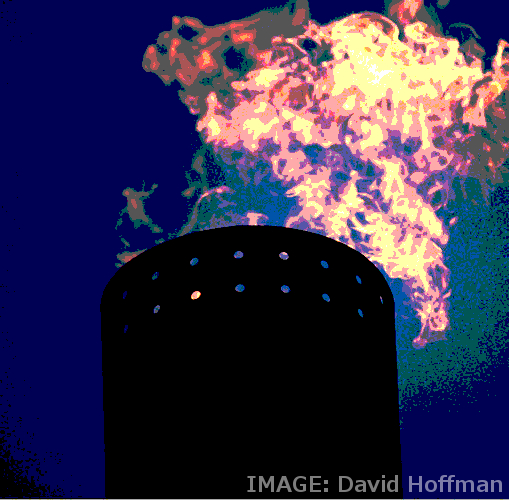Methane mix enhanced
 Binding methane with metal could be a new way to recycle the potent fossil fuel.
Binding methane with metal could be a new way to recycle the potent fossil fuel.
By including the rare metal osmium, UNSW chemists have engineered a new molecular ‘vice’ that can bind methane for hours – providing crucial evidence for an intermediate step that will inform new catalysts to store, transport, or transform the gas into methanol and help to avert wastage of the gas worldwide.
Methane (natural gas) is a potent molecule both as a fuel source and as a greenhouse gas, and yet copious volumes of it are burned around the world not to heat homes or to cook food but, instead, expelled as waste.
“Methane is an unwanted by-product from oil production and usually, for economic reasons, is burned in a process known as ‘flaring’,” says researcher Associate Professor Graham Ball.
“The amount of gas burned in this way is roughly equivalent to the natural gas demand of Central and South America, leading to 265 million tonnes of CO2 emissions in 2020.”
This waste occurs because the process of converting methane (gas) into a practical fuel at the site – like methanol (a liquid) – has, historically, been economically unviable.
“One way of converting methane to liquid fuels is through the use of catalysts that contain transition metal elements,” explains A/Prof Ball.
“Not only [are liquid fuels] far more convenient and far safer than storing gases, but also [come in] at a much lower energy cost.
“Liquid fuels are easier to transport and would be easily integrated into our existing fuel infrastructure – E10 petrol already has 10 per cent ethanol. If there were efficient, commercially viable methods to convert methane to methanol for example, this would also provide incentive to retain methane for conversion, and to avoid burning it without purpose, reducing overall fossil fuel use and damaging emissions.”
Translating methane into a state that is more compatible and practical than ‘gas’ proffers more benefits.
This new ‘osmium-methane’ complex can bind methane for hours, much longer than the current standard of microseconds, allowing for its analysis to create potential new catalysts to transform methane.
“We have found that methane, which is generally inert, will interact with an osmium-metal centred species to form a relatively stable osmium-methane complex. Our complex has an effective half-life of around 13 hours. This means that it takes 13 hours for half of the complex to decompose,” says James Watson, lead author publishing in Nature Chemistry.
“This stability, in conjunction with the relatively long lifetime of this complex, allows for in-depth analysis of the structure, formation and reactivity of this class of [osmium] complexes and helps to inform the design of catalysts that have the potential to transform methane into more synthetically useful compounds.
“Perhaps the most pertinent use of methane as a feedstock would be its sequestration from the atmosphere, which could curb the lasting damage that is being done to the environment and help limit global warming to 1.5℃,” Mr Watson says.
More details are accessible here.







 Print
Print